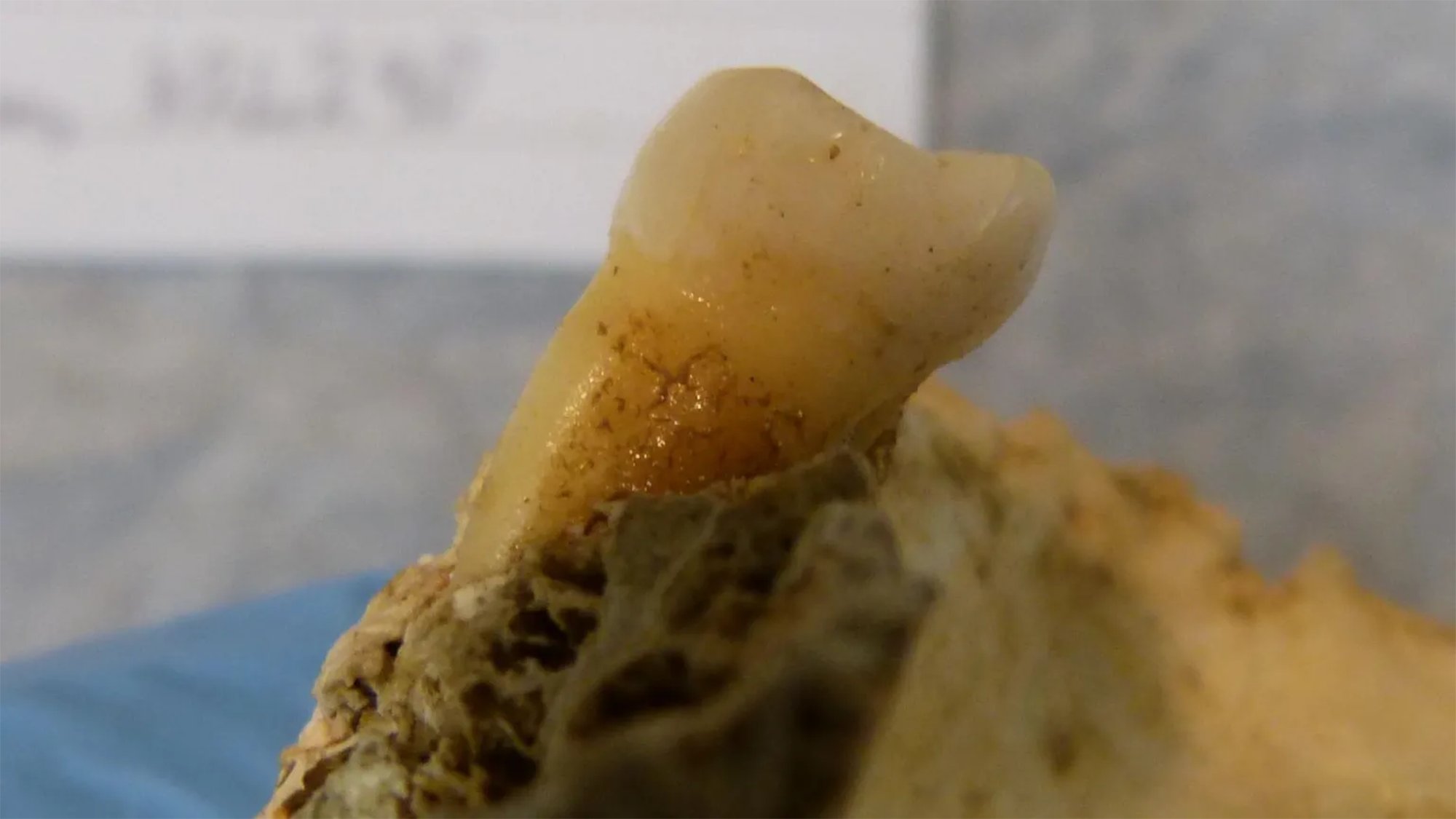

Keeping our teeth clean has been a pain for thousands of years, with some particularly painful methods historically used to take care of our chompers. Two 4,000-year-old human teeth unearthed in a limestone cave in Ireland were recently found to contain an “unprecedented quantity” of the bacteria that cause tooth decay and gum disease. The genetic analysis of these well-preserved microbiomes reveal how changes in diet shaped our oral health from the Bronze Age to today. The findings are described in a study published March 27 in the journal Molecular Biology and Evolution.
Fossilized dental plaques have been one of the best studied parts of the ancient human body. However, very few full genomes from oral bacteria in teeth prior to the medieval era have been uncovered. This means that scientists have limited data on how the human mouth’s microbiome was affected by changes in diet and from events like the spread of farming about 10,000 years ago.
Sugar-munching, acid producing bacteria
Both of the teeth belonged to the same male individual who lived in present day Ireland during the Bronze Age. The teeth contained the bacteria that cause gum diseases and the first
high quality ancient genome from Streptococcus mutans (S. mutans). This oral bacterium is one of the major causes of tooth decay.
S. mutans is very common in modern human mouths, but is very rare in the ancient genomic record. One potential reason why it’s so sparse may be how the bacterium produces acid. The acid decays the tooth, but also destroys DNA and stops the dental plaque from fossilizing and hardening over time. Most ancient oral microbiomes are found inside these fossilized plaques, but this new study looked directly at the tooth.
[Related: Vikings filed their teeth to cope with pain.]
Another reason why S. mutans may not have been present in ancient mouths may be due to a lack of sugary mouths for it to thrive in. S. mutans loves sugar and an increase of dental cavities can be seen in the archaeological record after humans began to grow and farm grains. However, the more dramatic increase occurred over the past few centuries when sugary foods became significantly more prevalent.
The disappearing microbiota hypothesis
The sampled teeth were part of a larger skeleton found in Killuragh Cave, County Limerick, by the late Peter Woodman of University College Cork. Other teeth in the cave show advanced dental decay, but there wasn’t any evidence of any caries–or early cavities. A single tooth turned out to have a ton of mutans sequences.
“We were very surprised to see such a large abundance of S. mutans in this 4,000 year old tooth,” study co-author and Trinity College Dublin geneticist Lara Cassidy said in a statement. “It is a remarkably rare find and suggests this man was at high risk of developing cavities right before his death.”

The cool, dry, and alkaline conditions of the cave may have contributed to the preservation of S. mutans DNA. While the S. mutans DNA was plentiful, other streptococcal species were mostly absent from the tooth sample. This indicates that the natural balance or the oral biofilm had been altered–mutans outcompeted the other bacteria species.
According to the team, the study adds more support behind the disappearing microbiota hypothesis. This idea proposes that our ancestors’ microbiomes were actually more diverse than our own today. More evidence that supports this hypothesis came from the two genomes for Tannerella forsythia (T. forsythia) that the team built from the tooth. T. forsythia still exists and causes gum disease.
“The two sampled teeth contained quite divergent strains of T. forsythia,” study co-author and Trinity College Dublin PhD candidate Iseult Jackson said in a statement. “These strains from a single ancient mouth were more genetically different from one another than any pair of modern strains in our dataset, despite these modern samples deriving from Europe, Japan, and the USA. This is interesting because a loss of biodiversity can have negative impacts on the oral environment and human health.”
Shifting genes and mouths
Both reconstructed genomes revealed dramatic changes in the oral microenvironment over the last 750 years. One lineage of T. forsythia has become dominant in global populations in recent years, which is a sign of an event geneticists call a selective episode. This is when one bacteria strain quickly rises in frequency due to a particular genetic advantage. The T. forsythia genomes that arose particularly after the Industrial Revolution acquired genes that helped it colonize the mouth and cause disease.
[Related: Bronze Age cauldrons show we’ve always loved meat, dairy, and fancy cookware.]
S. mutans also had evidence of recent lineage expansions and changes in gene content that both coincide with the popularization of sugar. However, modern S. mutans populations have remained even more diverse than T. forsythia, including some deep splits in the S. mutans evolutionary tree that pre-date the genomes uncovered in Ireland. The team believes that this is driven by differences in the evolutionary behind genome diversity in these bacteria species.
“S. mutans is very adept at swapping genetic material across strains,” said Cassidy “This allows an advantageous innovation to be spread across S. mutans lineages, rather than one lineage becoming dominant and replacing all others.”
Both of these disease-causing bacteria have essentially changed dramatically from the Bronze Age to today. However, it’s the very recent cultural transitions like more sugar consumption that appear to have had an outsized impact.
